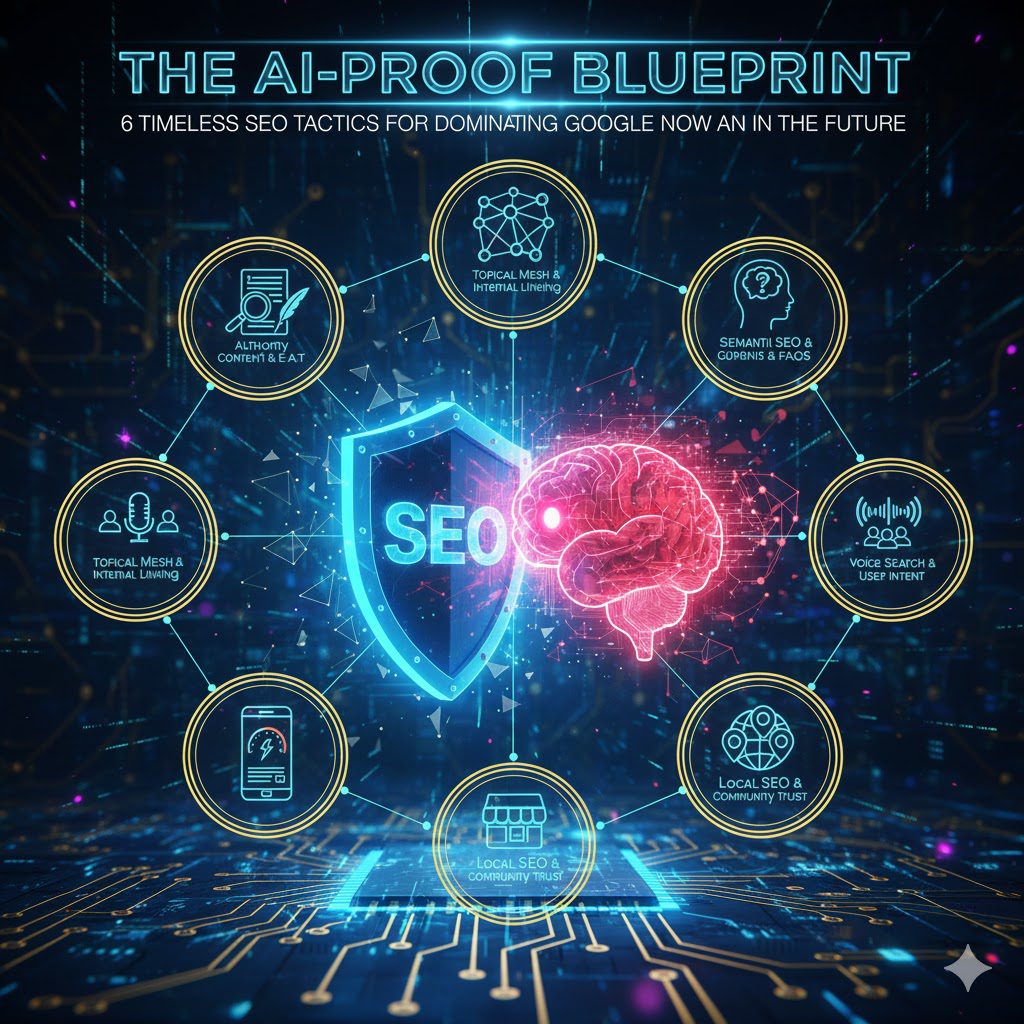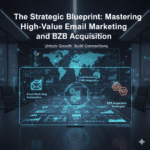The world of search engine optimization is in a state of perpetual transformation. With the rise of generative AI, AI Overviews, and rapidly shifting algorithms, it’s easy to feel like the ground is constantly moving beneath our feet. Tactics that worked last year are obsolete today, and what works today might be gone tomorrow.
However, beneath this chaotic surface of change lie foundational, timeless principles that not only survive but thrive in the age of AI. These are not hacks or loopholes; they are deep, strategic approaches that align with the core mission of search engines: to provide the absolute best answer to a user’s query.
Mastering these tactics is the key to future-proofing your content, building a resilient digital presence, and achieving sustainable, number-one rankings. This guide delves into six essential, AI-proof strategies, complete with real-world examples and actionable steps you can implement today.
1. The Foundation: Mastering Search Intent in the AI Era
Before you write a single word, you must know exactly what a searcher needs. This has always been the golden rule of SEO, but in the age of AI, it’s non-negotiable. Google’s own tools—the “People Also Ask” (PAA) box, “Related Searches,” and now “AI Overviews”—are not your competition; they are your crystal ball. They are Google explicitly telling you what users want. You just need to learn how to listen.
Take the query “best running shoes for flat feet” as an example. A novice SEO might just write a generic list. A master SEO, however, decodes the clues from the search engine results page (SERP):
- AI Overview Clues: The AI-generated summary will immediately highlight the key features users care about. It will synthesize information and likely mention terms like “stability,” “arch support,” “overpronation,” and “cushioning.” This is your primary checklist of topics to cover.
- People Also Ask (PAA) Clues: This box reveals the specific, nagging questions on users’ minds. You’ll see things like, “Are Hoka shoes good for flat feet?”, “What’s the difference between Brooks and OnCloud for flat feet?”, or “Can I walk in running shoes for flat feet?”
- Related Searches Clues: At the bottom of the page, this section reveals user segmentation. You’ll see “best running shoes for flat feet men,” “best running shoes for flat feet women,” and “best running shoes for flat feet for walking.”
The top-ranking page for this query is not there by accident. It is a masterpiece of fulfilled intent. It almost certainly has:
- A “key features” section discussing stability, arch support, and cushioning.
- Specific sections or mini-reviews for brands like Hoka, Brooks, and OnCloud.
- Clear segmentation, with “top picks for men” and “top picks for women.”
- A section addressing related concerns, like overpronation and using the shoes for walking.
Someone on that team took these clues, wrote them down, obsessed over what the searcher truly wanted, and then created a comprehensive resource that delivered on every single point. That is the first and most critical AI-proof tactic.
2. The “Sleeper Content” Strategy: Unlocking Hidden SEO Gold
One of the fastest ways to achieve a number-one ranking—sometimes in as little as 24 hours—is not by creating something from scratch, but by “waking up” your forgotten assets. “Sleeper content” refers to pages on your site that used to rank well but have slipped over time. They’ve been neglected and are just sitting there, waiting to be optimized and reclaimed.
However, not every old page is a sleeper. True sleepers have three specific, identifiable attributes.
Attribute 1: The Page Has Link Authority
First, the page must have enough link equity to compete with the current top results. Links are still a powerful signal of trust and authority to Google. You can check this using any major SEO tool’s SERP overview (like those from Ahrefs or Semrush).
Look at how many links (referring domains) the top pages have compared to your page. If your page has a comparable number of high-quality links but is still ranking on page two or three, it’s a prime candidate. Don’t just look at the number of links; click through to see the actual websites linking to them. A page with 20 links from authoritative industry sites is far stronger than a page with 100 links from low-quality directories.
Attribute 2: A Clear History of High Rankings (and Decline)
Second, the page must have definitively lost positions over time. You’re not looking for a page that never ranked; you’re looking for a former champion.
Using an SEO tool’s site explorer, plug in your page’s URL. You should see a clear historical loss in traffic and keyword positions. Dig one layer deeper by looking at the organic keywords report and its ranking history. You want to see a graph that shows your page holding top 3-5 positions for its main keyword for a significant period, followed by a clear, undeniable drop over the last year or so. This is the “smoking gun” that proves the page has authority and relevance but is failing a modern test.
Attribute 3: An Obvious Content Issue
This is the most important attribute. There must be a clear, fixable content issue. This usually falls into one of three categories:
- Search Intent Mismatch: The searcher’s intent has evolved, but your page hasn’t. For example, users searching for “best email marketing software” might now want in-depth comparisons and pricing breakdowns, while your old “sleeper” page is just a high-level “what is” guide.
- Outdated Content: This is the most common culprit for “freshness-based” queries. A post titled “Best Laptops” that hasn’t been updated in four years is useless. The information is stale, the models are discontinued, and Google knows it.
- Poor User Experience (UX): The page itself is the problem. It might be a giant, intimidating “wall of text” that reads like an academic paper. It might load slowly, have broken images, or be unusable on mobile devices.
If you find a page with all three attributes—good links, a history of success, and a clear content problem—you’ve found SEO gold. A full rewrite or a significant update that addresses the content issue (matches intent, updates information, and improves UX) can cause it to rocket back to the top of the SERPs, as Google’s algorithm combines its existing authority with its new, superior relevance.
3. The Art of Natural Link Acquisition: Frontloading Linkable Points
Once your page is ranking and getting regular traffic, you must leverage that visibility to build more authority. One of the easiest and most sustainable ways to do this is to attract backlinks naturally or passively. The best way to do this is by frontloading your content with “linkable points.”
A linkable point is any piece of information—a statistic, a quote, a key takeaway, or a unique definition—that other writers and journalists find so useful they feel compelled to share or reference it, linking back to your page as the source.

Take, for example, a post on SEO statistics. If such a page ranks, it might earn thousands of backlinks without a single outreach email. Why? Because other bloggers writing about SEO will Google “SEO stats,” find the page, and cite a compelling fact. An analysis of the anchor text for such a page would show people linking because of stats like:
- “68% of online experiences…”
- “60% of marketers say…”
- “SEO drives 1,000% more traffic than…”
The strategy is simple: frontload this information. Don’t bury your most interesting, quotable stats 1,500 words deep. Put them right at the top, often in a “Top SEO Statistics” summary box. This makes it effortless for other content creators to find what they need, cite your work, and give you a valuable backlink.
You can audit your own content for this. Use an SEO tool’s “Anchors” report to see why people are already linking to you. If you find any text anchors that contain a percent symbol (%) or a specific fact, you’ve found a proven linkable point. Take that stat and frontload it higher on the page, or use it in other relevant posts to maximize its visibility. People link to content that makes their content look more credible. If your page is the one they’re citing, every one of those links will help you stay at the top of Google.
4. Visualizing Value: Turning Data into Shareable, Link-Earning Images
This tactic is the next level of linkable points. It’s one of the most effective ways to earn high-authority backlinks naturally by turning your data into simple, shareable images.
Humans are visual creatures. Images draw the eye, make complex data digestible, and stick in our minds far longer than text. They also make people want to share. A study on how AI Overviews have impacted clicks to websites, for example, could be a dense, text-heavy analysis. But by visualizing the findings into three simple charts, that content becomes infinitely more powerful.
Those charts can then be picked up by authoritative industry sites, which will use the visuals in their own articles and (in most cases) link back to the original study as the source.
Look through your own content. If you have an interesting fact, statistic, or insight that is already earning links (or should be), turn it into a simple image that people will want to “steal.”
- A compelling statistic can become a bold, text-based graphic.
- A comparison can become a simple two-column chart.
- A process can become a basic flowchart.
Every time someone embeds that image in their post, there’s a strong chance they’ll link back to you for attribution. This visual-first approach is a massive amplifier for your passive link-building efforts.
5. Future-Proofing Your SEO: The Untapped Power of Free Tools
Let’s be honest: informational, “what is” content is already being significantly impacted by AI Overviews. But AI has not—and cannot—replace utility.
This is where free tools come in. Free tools solve real, tangible problems for users. Because they are inherently useful, they often have massive search demand and attract an incredible number of backlinks naturally.
Consider the top 10 free SEO tools offered by platforms like Ahrefs or Semrush. These toolkits collectively generate thousands of referring domains and drive millions of monthly organic visits. But you don’t need to be a massive SaaS company to win. Even small, niche sites using this strategy can dominate. A simple “Random Picker Wheel” site, for instance, can pull in over 3,000 referring domains and get over 2 million visits per month from Google alone, all because it solves one simple, specific problem.
The best part? AI makes building these basic tools insanely easy, even for non-developers. You can use an AI assistant to generate the code for:
- A simple calculator (e.g., “Mortgage Calculator,” “ROI Calculator”).
- A quiz (e.g., “What’s Your Skin Type?”).
- A generator (e.g., “Blog Post Idea Generator”).
- A randomizer (e.g., “Team Name Randomizer”).
Just open your favorite AI tool, ask it to generate the HTML, CSS, and JavaScript, and within seconds, you’ll have a working tool that you can tweak, style, and embed on your site. Once it’s live, you can build some initial links to it (a process covered in many free SEO courses, such as the excellent ones from HubSpot Academy or Semrush Academy).
After your tool is ranking, it can keep earning links and traffic passively for years. One good, useful tool can outperform 50 generic blog posts in both traffic and authority. Don’t sleep on this strategy.
6. Beyond Google: Diversifying Your Traffic with Omnichannel SEO
Everything shared so far works wonders for Google SEO. But the hard truth is that optimizing only for Google is no longer enough. Your audience is fragmented, and you need to diversify your traffic sources.
Platforms like Reddit and YouTube are no longer just “social media”; they are massive search engines in their own right, and Google loves to rank their content. In fact, Reddit alone has seen its search traffic from Google skyrocket, pulling in nearly a billion visits per month from Google search.
The good news? Your SEO skills are perfectly transferable. This positions you to dominate on these platforms.
How to Win on Reddit and Forums
Start by answering niche questions on Reddit, Quora, and other forums. But don’t just answer random questions. Use Google search ranking data to guarantee yourself exposure.
- Use an SEO tool to look at the keyword rankings for
reddit.com. - Filter for a word or topic related to your niche (e.g., “running shoes”).
- Find Reddit threads that are already ranking on page one of Google and getting a good amount of traffic.
- Go to that thread and provide the most helpful, comprehensive, and valuable answer.
If your comment or reply is high-quality, it will get upvoted. Now, your answer is at the top of a page that Google already trusts and sends thousands of visitors to. This is a powerful way to get exposure and build authority.
How to Win on YouTube
Ranking on YouTube is like doing Google SEO on “easy mode.” The same core principles apply: keyword research, matching search intent, and optimizing for user experience (in this case, “watch time”). By following the basic steps in a good YouTube SEO tutorial, you can tap into a massive new audience. A well-optimized YouTube presence can easily generate over a million views per year from YouTube search alone.

If you can rank in Google, you can be successful on other platforms. Google has invested more time and money into understanding search than anyone. Use the foundations you’ve built in Google SEO to win everywhere else.
Conclusion: The Unchanging Core of a Changing Field
The tools, platforms, and algorithms of SEO will continue to evolve at a breakneck pace. AI will undoubtedly reshape the SERPs, and new competitors will emerge. But the strategies that win in the long run will remain the same.
The future of SEO is not about outsmarting an algorithm. It’s about:
- Deeply understanding what your audience needs (Mastering Intent).
- Maximizing the value of your existing assets (Reviving Sleepers).
- Creating quotable, credible content that builds its own authority (Linkable Points).
- Making that content easy to share and digest (Shareable Images).
- Solving real problems for users, not just answering questions (Free Tools).
- Meeting your audience on every platform they use (Diversification).
These are not just “SEO tactics.” They are a holistic, user-first marketing strategy. By building your foundation on these timeless, AI-proof principles, you won’t have to fear the next algorithm update; you’ll be the one it’s designed to reward.






